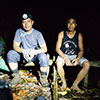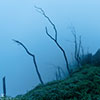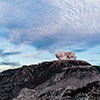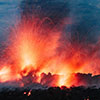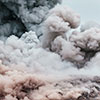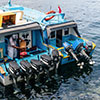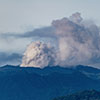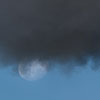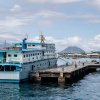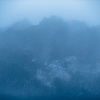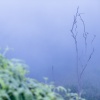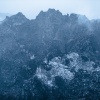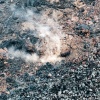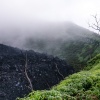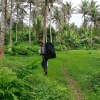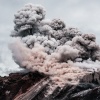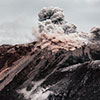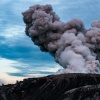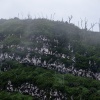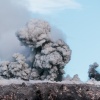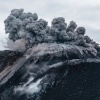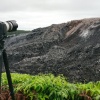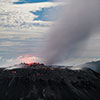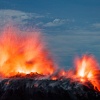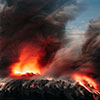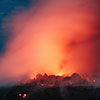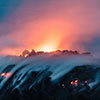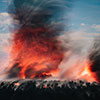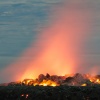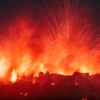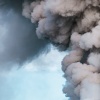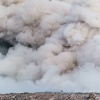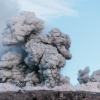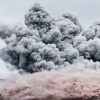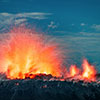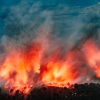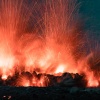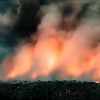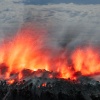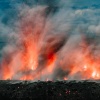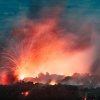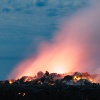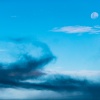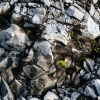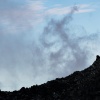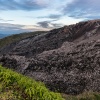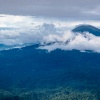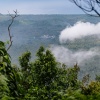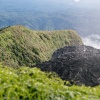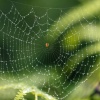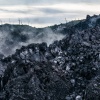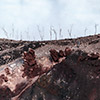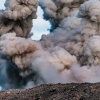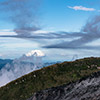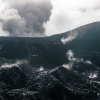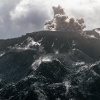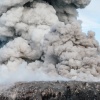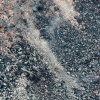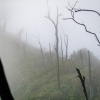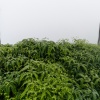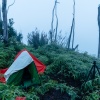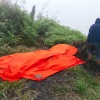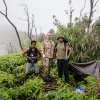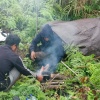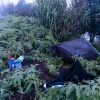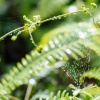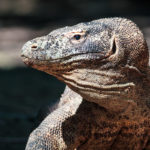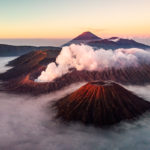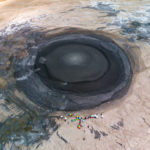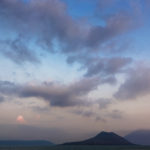The erupting lava dome of Ibu volcano
In the Far East of Indonesia, where cinnamon and nutmeg shake hands, are the Moluccan Island; the myth-enshrouded Spice Islands. That’s where the journey leads to, to Ibu volcano on the island of Halmahera. Its steep crater and continuously Strombolian erupting lava dome are the product of Sunda plate rubbing with the Philippines.
Climbing Mount Ibu
Before standing on the crater of Ibu, another volcano plays an important role. That is Gamalama on Ternate, where the regional airport serves as gateway to enter the Moluccans. Jumping on the waves between both islands, a stuffy speedboat brings us to Jailolo, a village on Halmahera. From there it’s another 3-hour drive to reach Ibu volcano. Back then my friend Martin Rietze needed quite some time to get approval from the village elder to climb Ibu volcano. Today that’s not necessary anymore as my negotiation results quite correlate with money being paid. My Guide Alex Djangu isn’t the cheapest, on the other hand I can be sure that my dough supports the school of his village as well as some environmental protection projects he kicked off.
The rough-and-ready rule the way up to the volcano needs less than 5 hours must have been defined by a Marathon-skilled handbag-only hiker. Alex as well as I quickly realise that with all the supplies and photo equipment we’ll need 6-7 hours. Walking under majestic coconut palms we start our hike at 15:00. Soon vegetation changes and becomes a dense primary tropical rain forest. Yet we don’t know that on the way back that vegetation belt will fret us quite a lot. It doesn’t need much time until I am soaked in my own sweat. That’s no surprise when trekking with 25kg equipment and at sticky hot 30° Celsius.
We take a break and decide to climb the remaining route at night. That means a wake-up at 2 o’clock and a positive side effect of way better temperatures. However, I get soaked in my own sweat a second time. While we hike up I notice hundreds of myriapods being as thick as a thumb. Not always I can avoid to scrunch them. They end under my sole with a mushy cracking.
A large tarantula just could escape that fate. Immediately it starts trying to kill my hiking boots. At night those hairy beasts look even beastlier. Ibu is very steep and to reach the crater, we have to scramble the last 20 metres on all fours. At the top the fluffy vegetation hides the actual crater rim and invites to fatal missteps.
Freak weather, freak drones
Having reached the crater, Mount Ibu and its lava dome shroud itself in clouds. One can’t even look further than 50 metres. And that’s the main problem of Ibu: weather is often not on our side. For example, recently a documentary team of the BBC stayed more than 2 weeks at the Ibu but had to leave again without a single minute filmed. This morning also I may see the mighty crater as well as the 3-staged lava dome only for 1 hour. Then clouds push in and freak out… It was absolutely bucketing down and while our tents almost fly away, I get soaked a third time, luckily not with sweat. We seriously think about a quick descent but luckily grit our teeth as after the rain the volcano delights us with small pyroclastic flows and evening ash eruptions. One can even spot the mighty constant ash eruption column of Dukono volcano in the far distance.
Finally I can put my new drone into real operation…! Though, I reckoned without DJI’s tiresome compass calibration and the immense geomagnetic impact of the lava dome right next to me. Its presence and influence is so strong that all calibration attempts fail. I need to pack it away without having achieved anything :( Well… Life… It is the way it is. I want to see more of the lava dome than the usual bottom-up view and goad on Alex to climb the southern higher crater wall. We need to climb down to make it up again. Beeline the way is only 200 metres long but needs almost an hour before we reach that elevated spot.
The higher position provides a fantastic view of the crater. One’s literally at eye-level with the explosion that happen in about 400 metres distance. With a 70-200mm lens photographers are well equipped already, but to get more out of it I take the 200-400mm. The fluffy vegetation on the crater rim doesn’t let the tripod stand 100% still. Don’t move!
The explosions happen every ~20 minutes. Some are small, some are strong. It is absolutely breath-taking to see how the fire, its light and colour take control of the grey crater area. Reminiscences of Santiaguito volcano come into my mind. I take photos until late night, but get thwarted by dense clouds moving into the crater.
Jet fighter atmosphere
Around 2 o’clock all things called sleep come to a sudden end as for about 45 minutes the volcano produces a tremendous noise. Its sounds remind of an army of jet fighters launching their after burners at the same time to bring democracy and freedom to the world. Eyes wide open I can’t sleep anymore, also because absolutely nothing can be seen, due to dense clouds. Also the morning after the Ibu crater shrouds itself in densest clouds. The webs of small red spiders are spangled with dew drops. In the background dead trees silhouette eerily against the swirling mist. Only short before starting the climb down to the valley the black lava filled crater clears up as if its sunny backlight wants to say us “Goodbye!”
One last leg is still pending…, that is the way down. The rain the day before softened the clayey forest soil making the already effin steep path being slippery as f… It doesn’t even take 10 single steps to become destabilised in hiking again and again. Counteract that with hands and feet is very strength-sapping. Still I fall flat on my bum way too often. Reflexively the hands try to grab something, that is of course thorny or spikey. After the climb down my fingers look tortured as if I was guest of Guantanamo for the last 4 weeks. The Ibu crater is pretty narrow and wide-angle photos definitely make only very rarely an impression. I am very chuffed though as I was the first one with professional photo equipment on the high crater edge and could feel out the lava dome eruptions with a tele lens :)

